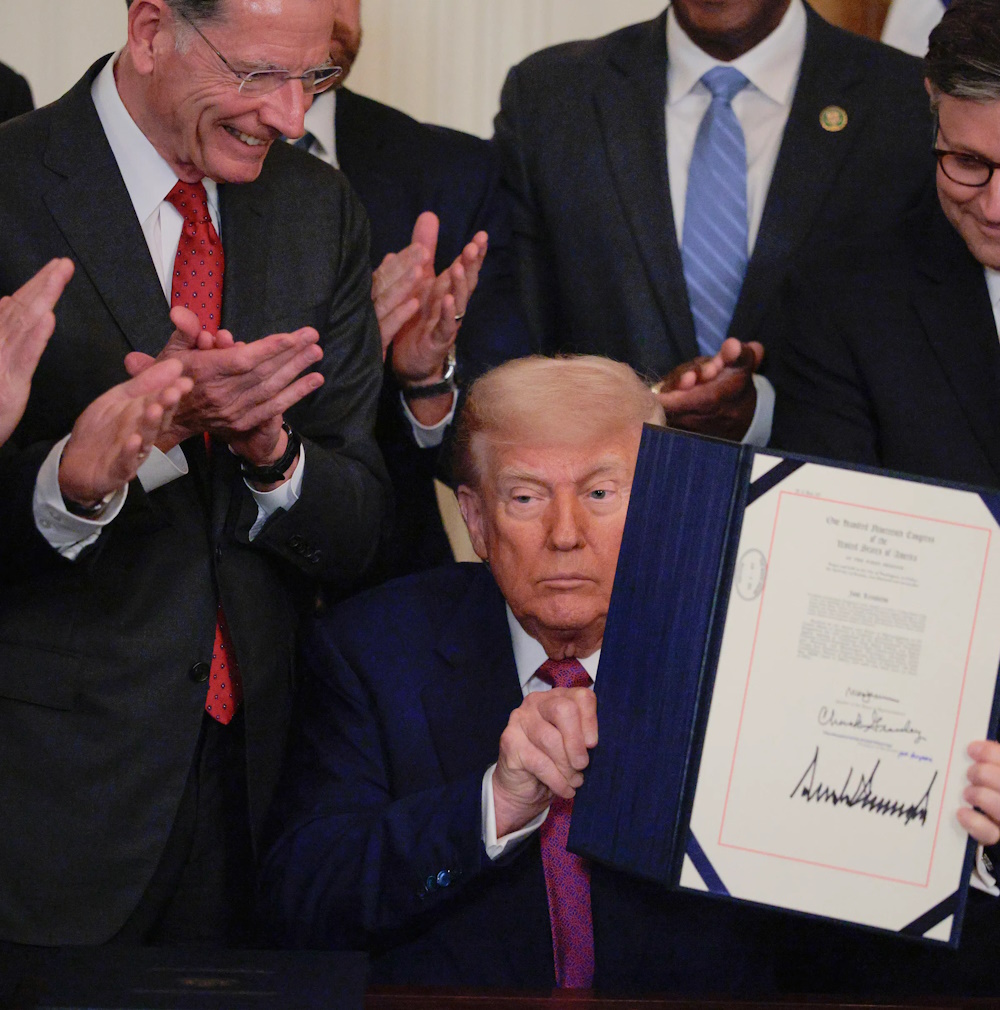
Dow futures indicate an upward trajectory following the Senate’s approval of a substantial fiscal bill that aligns with President Donald Trump’s key legislative priorities. The measure is now set to advance to the House of Representatives, where Republicans are confronted with a looming deadline to present the bill to Trump for his signature, thereby enacting it into law. On the economic calendar, private payrolls data may offer a new insight into the condition of the American labor market.
Dow futures experienced a modest increase on Wednesday, as investors evaluated the recently approved version of a substantial tax-cuts and spending package by the U.S. Senate while monitoring the prospects for interest rates and tariffs.
Dow futures contracts increased by 127 points, or 0.3%, S&P 500 futures rose by 17 points, or 0.3%, and Nasdaq 100 futures gained 56 points, or 0.2%. The primary indices exhibited a mixed performance in the prior session, as market participants focused on a potentially more hawkish interpretation of U.S. employment data alongside a less-than-expected decline in manufacturing sector activity.
The central narrative focused on the destiny of Trump’s “One Big Beautiful Bill,” which, following a narrow passage in the Senate, now advances to the House of Representatives for ultimate ratification—amid a self-imposed July 4 deadline for the legislation to reach Trump’s desk, casting a significant shadow over the proceedings. Nonetheless, it is still unclear if the Republican lawmakers endeavoring to guide the bill through Congress will succeed in adhering to that timeline. The House is anticipated to consider the Senate’s revised text on Wednesday, although some resistance from fiscally-conservative GOP legislators is expected to arise. During the protracted deliberations surrounding the bill’s passage, certain Republicans have expressed reservations regarding its prospective effects on the nation’s fiscal health. Nonpartisan observers have indicated that the measures, which encompass the extension of Trump’s 2017 tax cuts, new tax reductions, and heightened spending on defense and border security, are projected to increase the federal debt by more than $3 trillion.
Despite the anticipated increase in U.S. obligations, Treasury markets have responded in a rather subdued fashion, “cushioned by hopes” that the Federal Reserve may opt to reduce interest rates in the near future, analysts at ING noted to clients.
The trajectory of Federal Reserve policy is expected to be a focal point when the latest monthly measure of private payrolls is unveiled on Wednesday. Analysts anticipate that the number reported in the ADP National Employment Report will increase to 99,000 in June, a notable rise from the 37,000 recorded in the previous month. Data released on Tuesday indicated that job openings unexpectedly increased in May; however, hiring showed signs of weakness, suggesting a potential cooling in an otherwise robust labor market. Additional analysis of the labor market’s condition is anticipated on Thursday, as the crucial nonfarm payrolls report is set to be released.
Striving for optimal employment while managing inflationary pressures has historically been a central objective for Federal Reserve policymakers. The demand within the labor market appears to be diminishing, and price increases have been notably moderate in recent times. Nevertheless, officials from the central bank have predominantly endorsed a cautious stance regarding any adjustments to interest rates, referencing the ambiguity surrounding the impact of extensive U.S. tariffs on the broader economy. The levies have captured significant attention from market participants, particularly as the expiration of a hiatus on Trump’s stringent “reciprocal” tariffs approaches in the coming days. Officials from the Trump administration have engaged in negotiations with various nations amid the delay; however, the White House has shown minimal advancement in obtaining new agreements.
On Tuesday, Trump informed reporters of his belief that India is prepared to finalize a trade agreement with the U.S., which would benefit American companies and reduce the country’s tariffs. India is set to encounter a 26% levy rate on July 9, coinciding with the conclusion of Trump’s reciprocal tariff delay. Currently, India is not permitting entry to anyone. “I think India is going to do that; if they do that, we’re going to have a deal for less, much less tariffs,” he stated. However, Trump also suggested that he might opt not to extend the deadline — and would instead dispatch letters informing individual nations of their tariff rates.
Crude prices exhibited minimal fluctuations on Wednesday, as market participants assessed advancements regarding a ceasefire between Israel and Hamas, alongside an increase in U.S. inventories in anticipation of the forthcoming OPEC+ meeting. Brent futures experienced a modest increase of 0.1%, reaching $67.16 per barrel, while U.S. West Texas Intermediate crude futures remained stable at $65.45 per barrel. On Tuesday evening, President Trump announced that Israel had consented to the necessary conditions to finalize a 60-day ceasefire with Hamas, simultaneously urging the Palestinian group to accept the agreement. Data from the American Petroleum Institute indicated on Tuesday that U.S. oil inventories increased by 0.68 million barrels in the week ending June 27. This build came after five consecutive weeks of significant draws in U.S. oil stockpiles, prompting inquiries regarding fuel demand during the travel-intensive summer season. The official government inventory report is scheduled for release later on Wednesday.
